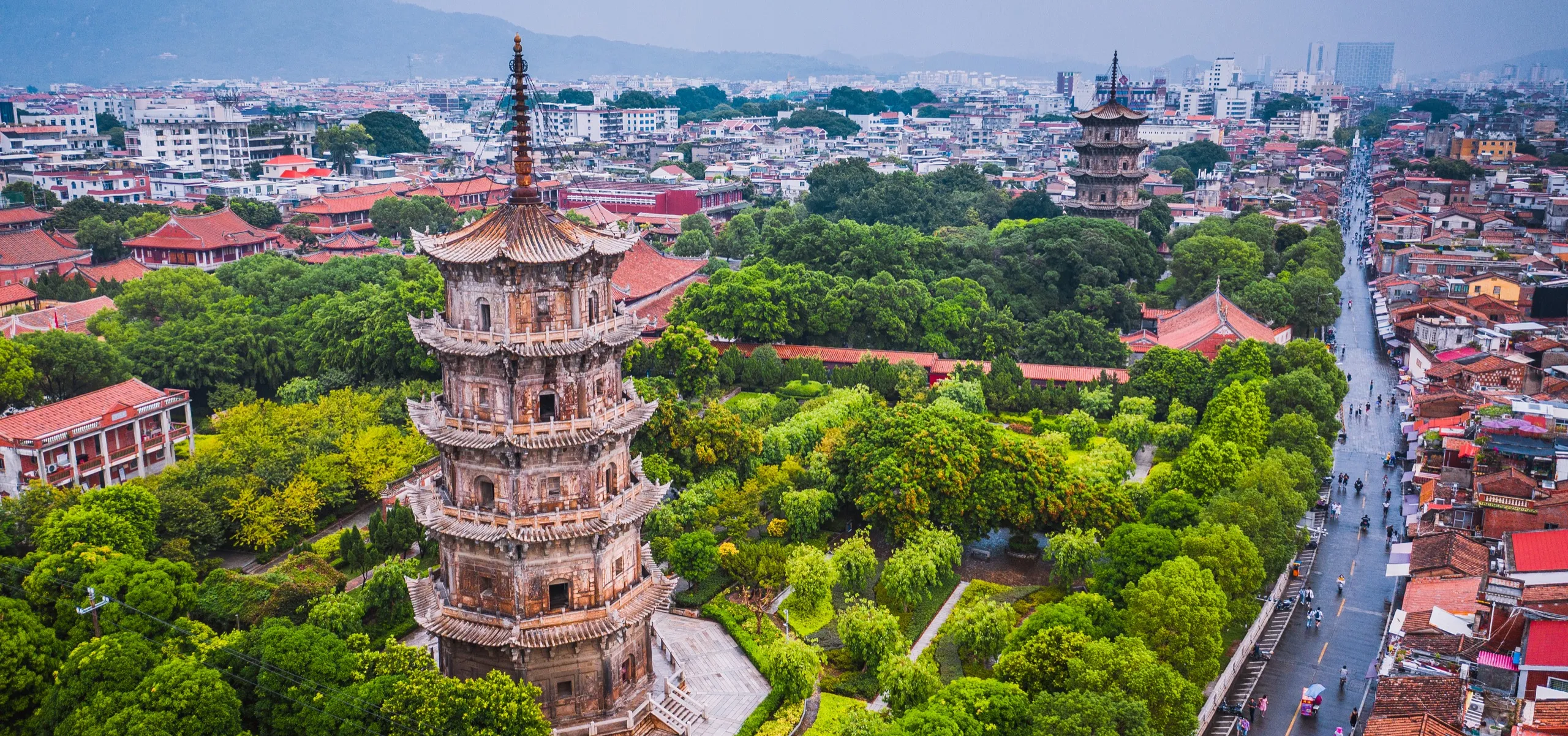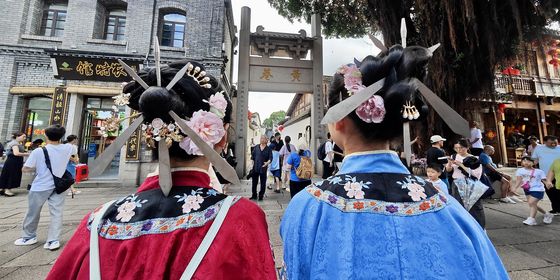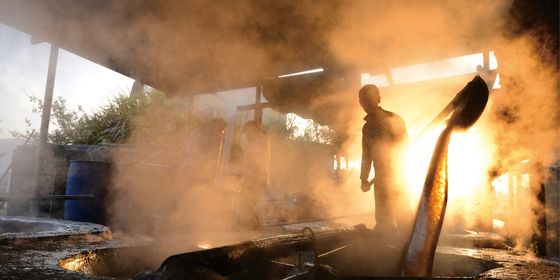The dialect of the Southern Min region is spoken by 45 million people worldwide (and makes for great pop music)
When Chinese linguist and philosopher Lin Yutang traveled around the country in the early 20th century, he would often seek out the elegant tones of his hometown dialect: 闽南话 (Mǐnnánhuà, or Hokkien), or as Lin called it, “the sound of home (乡音).” In fact, when Lin traveled to Taiwan, Hong Kong, or other southern regions, he would deliberately frequent restaurants and shops owned by Minnanhua speakers and while away hours in their company—such was his love of his mother tongue.
Born in Banzi, a town administered by Zhangzhou today, Lin was from the heart of China’s Southern Min (or Minnan) region, which covers the southeastern parts of Fujian province, mainly the cities of Quanzhou, Xiamen, and Zhangzhou. There, and in other areas including Taiwan, Hainan, Zhejiang, Guangdong, as well as in many Southeast Asian countries where Minnan folks have migrated to over the centuries, an estimated 45 million people speak Minnanhua, making it one of the most widely spoken Chinese dialects worldwide.
The Southern Min dialect has a gentle flowing sound, perhaps from the laid-back attitude of the region’s inhabitants. With the steamy climate in southern Fujian yielding abundant fruits, flowers, crops, and seafood, Minnan folks are often said to enjoy a comfortable slow-paced life and positive mindsets. Indeed, popular modern Minnan music includes tracks such as the 1988 classic “Fight to Win (《爱拼才会赢》 Ài Pià Chiah ē Iâ )” by Ye Qitian, who sings that life has “ups and downs” and success depends on “one-third luck, two-thirds hard work.” Chen Lei espouses a similar philosophy in his Minnanhua pop song from 2002, “So Long as You’re Happy (《欢喜就好》Huann-hí Tio̍h Hònn),” in which he tells us life can be great even without a fancy car or big house.
Minnanhua has no standardized written script, but has been passed down orally for generations. The origin of the dialect is not entirely clear, though some historians trace it back to the variety of Chinese spoken on the banks of the Yellow River during the Northern and Southern dynasties (420 – 589), an era when many people from northern China fled to the Southern Min area to escape warfare and conscription. Certain characteristics from ancient varieties of Chinese are believed to have remained in the Minnan dialect, including aspects of grammar, vocabulary, and pronunciation. It still preserves archaic dental consonants (formed when the speaker makes contact between their tongue and teeth), and eight tones including the entering tone (a sudden stop at the end of a word), which have already been lost in many other dialects in China. A simple example is that when counting from one to 10, you will find the pronunciation of one (it), six (la̍k), seven (tshit) and 10 (tsa̍p) end with abrupt consonants known in lingustics as “stops,” a feature that has been lost in standard Mandarin but remains in Cantonese.
Due to the complex geography of the region, Minnanhua can vary from city to city, and even village to village. For example, people from Longwen district in Zhangzhou say “Iû-tsāi-lí (由在你),” to express “that’s up to you,” while people from Longhai district, just down the road, use “kù-tsāi-lí (据在你)” instead.
Minnnahua also features loanwords from Southeast Asian languages, particularly since Fujian province has been an important maritime trading hub for centuries. For example, the Minnan words for “soap (sap-bûn)” and “coffee (ko-pi)” are borrowed from Malay.
With younger folks moving around the country and focusing on standard Mandarin in school, Minnanhua has been facing a loss of fluent speakers in recent years. However, you are still more likely to hear Minnanhua than Putonghua on most streets in southern Fujian. Try striking up a conversation with the common Minnan greeting, “tsia̍h-pá-buē (呷饱未? Are you full?)?” or start a story with “wā gǎ lī gòn (我跟你讲, let me tell you).”
Listen
Hi, are you full?
Lī hòu, tsia̍h-pá-buē?
你好, 呷饱未?
Let me tell you.
wā gǎ lī gòn ho
我跟你讲
Bad bamboo can produce good shoots, while good bamboo can produce bad ones.
Pháinn tik tshut hó sún, hó tik tshut ku-lún.
歹竹出好笋,好竹出痀仑。
This is the opposite of the common saying “like father, like son,” and it means that a person’s achievements and legacy can’t be inherited. Each generation must forge its own path.
Take suffering as nutrition.
Tsia̍h-khóo tòng-tsò tsia̍h-póo.
吃苦当作吃补。
This common Minnan saying encourages one to seek joy and gains from hardship.
Barren soil is good at absorbing water.
Sán tshân gâu suh tsuí.
瘦田好吸水。
This is a humorous way to describe people who seem to eat a lot but still remain thin.
I’ve crossed more bridges than you’ve taken steps, and eaten more salt than you’ve eaten rice
Kuè kiô khah tsē lí kiânn-lōo, tsia̍h iâm khah tsēlí tsia̍h bí.
过桥多过你走路,吃盐多过你吃米。
This phrase indicates that the speaker has more experience than the listener.
Dragons befriend dragons; phoenixes befriend phoenixes; while the hunch-back befriends fools.
Liông kau liông, hōng kau hōng, ún-ku kau tòng-gōng.
龙交龙,凤交凤,佝偻交侗戇。
This saying indicates that people will attract friends of the same kind as themselves (we’re not really sure what makes a hunchback the same as a fool).












